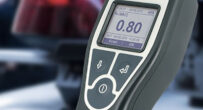Alcohol ban in Parliament may be fit and sober response
Liberal MP Katie Allen and senator Sarah Henderson have called on the government to consider making Parliament House a dry workplace, to ensure high confidence in the behaviours in the nation's democratic heart.
This is a logical response to what we have been reading - alcohol seems to be a common factor in so many incidents, most recently in the alleged rape of Brittany Higgins. Alcohol and drugs have torn their way through sporting world, with devastating impacts on women and the careers of footballers. And it appears to have generally fuelled very poor behaviour in Canberra.
It is when alcohol results in a rape or some other crime that we hear about it, but what about all the poor decision-making that it must precipitate under the radar?
Blue-collar workers are on to this. Employees in the construction industry, mining and transport have been subjected to random drug and alcohol testing for many years, which is generally regarded as positive for all involved. Unions are typically very supportive.
In those industries, the motivation is saving lives through minimising workplace accidents.
There is a good case for considering extending bans on alcohol and drug use across white-collar fields as well, particularly where individuals hold positions with “fit and proper” responsibilities.
Alcohol is a depressant drug, which means it slows down the messages travelling between the brain and the body.
Consumption of alcohol, particularly beyond 0.05 per cent blood concentration, is likely to result in confusion for the drinker, blurred vision, clumsiness and memory loss. In some cases, it can result in nausea, vomiting, unconsciousness, coma and even death.
Impaired judgment and memory loss should be seen as very serious conditions for people holding “fit and proper” positions. It is incredible how little effort has gone into mitigating these risks.
The liver metabolises approximately one standard drink an hour. Sweating it out with exercise, cold showers, coffee or fresh air will not speed up the process.
This may ease the symptoms, but it will not remove alcohol from the bloodstream any faster. This means the effects of alcohol can stay with the individual through the next day, particularly if drinking has extended late into the night or early morning.
In the research community, there has been much discussion about the impact of COVID 19 on alcohol and drug use. There is mixed evidence on whether the pandemic has resulted in higher or lower alcohol usage.
In May last year, CommSec reported a 25 per cent rise in alcohol sales from bottle shops over the previous six weeks. Some Australian online retailers reported 50 per cent to 500 per cent increases in March last year compared with the same period in 2019. Other data suggests alcohol consumption across the country has been stable, although there are regional variations.
From a long-term usage perspective, there are mixed signs as well. Between 2016 and 2019, the proportion of ex-drinkers rose from 7.6 per cent to 8.9 per cent. There was also a rise in the number of people cutting back on alcohol, with 31 per cent of people saying they had reduced the number of alcoholic drinks they consumed at any one time, up from 28 per cent in 2016.
Despite this, there is little change in the proportion of people drinking at risky levels.
In 2019, one in four (25 per cent) people drank at a risky level on a single occasion at least monthly, while about one in six (16.8 per cent) exceeded the lifetime risk guideline.
Other drugs should also be considered. A recent report from the Australian Criminal Intelligence Commission, which analysed wastewater, found that cocaine use in some parts of Australia had reached record highs, including in the ACT.
A starting point for considering bans on alcohol and drugs is to work out who holds a “fit and responsible” job.
Clearly federal and state ministers, including their staff, would fall into this category, and perhaps all members of parliament, particularly those in Canberra who reside outside their home state for long periods.
But the coverage net should not stop there. People who work in critical white-collar industries should also be included.
The finance industry, which covers insurance, superannuation and banking, is subjected to prudential regulation.
As part of prudential regulation, the executives who hold key decision-making and riskmanagement positions are legally required to be fit and proper.
Responsible persons should be assessed for fitness and propriety before they are employed and then on an annual basis.
Despite their prudential obligations, there seems to be little to zero effort by the boards of banks and insurance companies to identify the risk of executive drug and alcohol abuse. There is a material exposure here.
The core of risk management is to first “identify” a risk. Only then can it be managed.
The events in Canberra have pointed to the need for much better deterrence. Henderson and Allen have made an important strike at getting a discussion going, not only in politics, but through the white-collar executive ranks generally.
By: NICK HOSSACK and MAL BEACHAM
Nick Hossack is principal at the public policy consultancy Benchmark Analytics, and his coauthor Mal Beacham chairs the peak body the Workplace Drug Testing Association.

 Breathalysers
Breathalysers
 Drug Testing
Drug Testing
 Combo Kits & Safety Products
Combo Kits & Safety Products
 Calibration & Services
Calibration & Services
 Stay Current with Our Latest Training Techniques
Stay Current with Our Latest Training Techniques